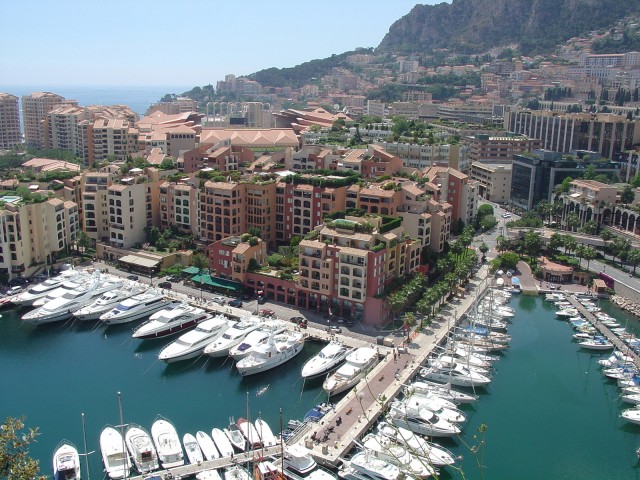Monaco
Area .75 square mi (1.95 square km)
Population 37,620 2014
Capital Monaco-Ville
Highest Point Mount Agle 460 ft (140 m)
Lowest Point 0 m
GDP $6.075 billion 2011
Primary Natural Resources climate for tourism.
WHILE EXTREMELY SMALL at only 48 acres (19.4 hectares) in area bordering FRANCE and ITALY, Monaco still has several distinct geographic areas. The official residence of the government and prince of Monaco is a rocky point called Monaco-Ville. The Monte Carlo district, with its famous casino and expensive boutiques, is at the opposite end of the principality. Between the Rock and Monte Carlo is the small harbor and shopping area known as La Condamine. Fontvielle is a new residential area reclaimed from the sea. It has a large marina as well as a sports stadium and some small light industry.

Monaco remains one of the few officially royal countries in the world. Its leaders are hereditary, descending from the founder of Monaco, Francois Grimaldi, who sneaked into the original castle disguised as a monk on January 8, 1297. Since then the Grimaldi family has been the recognized rulers of Monaco. Should the family die out, Monaco will become an autonomous district of France. It was recognized by the United Nations in 1993.
Monaco's primary economic value today is as a major tourist and banking center as well as a tax haven for the very wealthy. There is no income tax paid in Monaco. Its political neutrality has been recognized virtually since its inception. Often overlooked is Monaco's world-class Oceanographic Museum, founded by Prince Albert I in 1906. It is one of the most prominent centers for marine studies in the world and may be best known for its association with Jacques Cousteau.